Study on the Summer Ventilation Mechanism of Traditional Dwellings in China’s Hot Summer and Cold Winter Region: A Case Study of Rucheng Dwellings in Hunan
Abstract
1. Introduction
2. Rucheng Wind Environment
3. Methods Section
3.1. Comparison of Residential Buildings in Different Regions
3.2. Selection Principles
3.3. Outside Boundary Condition of Measured Chamber
4. Outdoor Measured Results
4.1. Field Measurement of Summer Monsoon Environment
4.2. Case Ventilation Methods and Evaluation Indicators
4.2.1. Ventilation Mode
4.2.2. Evaluation Index
5. Indoor and Outdoor Ventilation Simulation
5.1. Outdoor Ventilation Simulation
5.1.1. Setting of Boundary Conditions
5.1.2. Simulation and Analysis of Outdoor Ventilation
5.2. Indoor Ventilation Simulation
5.2.1. Setting of Boundary Conditions
5.2.2. Status Quo Simulation Results
5.2.3. Analysis of Optimisation Simulation Result
- 1.
- Projection angle of different wind direction.
- 2.
- Different ways of opening windows.
6. Conclusions and Discussion
6.1. Conclusions
6.2. Discussion
Author Contributions
Funding
Data Availability Statement
Conflicts of Interest
References
- Huang, Z.; Zhuo, F.; Shi, Y.; Lu, Y. Optimization of thermal environment of Huizhou traditional housing in winter. Hous. Sci. 2017, 37, 34–37. [Google Scholar] [CrossRef]
- Zhang, F.; Zhang, Q.; Wang, J. Ventilation optimization strategy and efficiency of rural dwellings in Luoyang. Ind. Constr. 2020, 50, 34–40. [Google Scholar] [CrossRef]
- Liu, X.; Liu, S.; Liu, H.; Ai, Y.; Chen, Q. Study on ventilation performance of traditional dwellings in northeast Hubei province. Archit. J. 2020, S1, 33–37. [Google Scholar]
- Wang, F.; Zhao, X. Study on natural ventilation and optimization of bai ethnic traditional Dali dwellings. Inter. Des. Constr. 2021, 5, 115–117. [Google Scholar]
- Wang, P.; Chao, Y. Discussion on the Natural Ventilation Design of Traditional Dwellings. Sichuan Build. Sci. 2012, 38, 283–286. [Google Scholar]
- Wang, G.; Zheng, J.; Zhu, X. Numerical simulation study on the prototype wind environment in traditional well lane: A case study of Baojing Village in southern Hunan. South Archit. 2021, 3, 122–129. [Google Scholar]
- Yu, R.; Xu, H.; Xu, H.; Zhao, J. Study on ventilation efficiency of traditional residential roadway in Jiangxi province: A case study of Houwan village in Nanchang. Archit. Cult. 2021, 12, 240–242. [Google Scholar] [CrossRef]
- Du, Z.; Guo, W.; Li, W.; Gao, X. A study on the optimization of wind environment of existing villa buildings in Lingnan area: A case study of Jiangmen’s “Yunshan poetic” moon island houses. Buildings 2022, 12, 1304. [Google Scholar] [CrossRef]
- Xu, Y.; Tang, L. Analysis and protection of narrative structure of carved decorations in traditional folk houses in central Zhejiang. Shanxi Archit. 2022, 48, 30–33. [Google Scholar] [CrossRef]
- Fang, W.; Tang, X.; Cui, Y. Research on the prototype construction of courtyard-style traditional residential houses in southeast Shanxi driven by wind environment. Archit. Cult. 2022, 4, 175–176. [Google Scholar] [CrossRef]
- Fang, W.; Tan, X.; Cui, Y.; Sun, Y. Research on the driving mechanism of wind environment of typical courtyard-style traditional dwellings in southeast Shanxi. J. Shandong Jianzhu Univ. 2022, 37, 88–96. [Google Scholar]
- Liu, X.; Zhu, G. Simulation of heat loss of ventilation windows in residential building’s indoor thermal environment. Comput. Simul. 2022, 39, 441–445. [Google Scholar]
- Zheng, Z.; Tang, M.; Liu, X.; Jiang, K. Study on the influence of geometric parameters of the plane of Huizhou traditional residential patio form on indoor wind environment. Furnit. Inter. Des. 2023, 30, 115–123. [Google Scholar] [CrossRef]
- Wang, X.; Fang, H. Research on the transformation technology of wind and heat environment in Huizhou of ancient traditional dwellings-taking Cao’s house as an example. Build. Sci. 2023, 39, 64–70. [Google Scholar] [CrossRef]
- Hu, H.; Lin, A.; Lin, C. Field study on summer thermal environment and climate adaptability of traditional courtyard dwellings in Fuzhou. J. Fujian Univ. Technol. 2023, 21, 338–345. [Google Scholar] [CrossRef]
- Shi, Y.; Ye, Q.; Gao, X.; Tang, M. Study on the measurement of summer thermal environment of traditional Tujia residential areas in eastern Guizhou. Archit. Cult. 2023, 12, 206–208. [Google Scholar] [CrossRef]
- Zhang, L.; Tian, M.; Sang, G.; Cui, X.; Zhu, Y.; Han, W. Study on summer thermal environment analysis and passive optimization strategy of Guanzhong mountain dwellings. Acta Energiae Solaris Sin. 2024, 45, 243–250. [Google Scholar] [CrossRef]
- Wang, H.; Zhou, L.; Tang, H. Impact of windows on the indoor thermal environment of Chinese Chuandou-style timber residential houses: Tests and simulations. Indoor Built Environ. 2025, 34, 460–476. [Google Scholar] [CrossRef]
- Hou, C.; Hu, W.; Jiang, Y.; Gao, W. Optimization and renovation design of indoor thermal environment in traditional houses in Northeast Sichuan (China)—A case study of a three-section courtyard house. Sustainability 2024, 16, 2921. [Google Scholar] [CrossRef]
- Guo, J.; Tang, Y.; Xie, S.; Ren, N. Review on the thermal environment of traditional dwellings in the 21st century based on cites pace. Urban. Archit. 2024, 21, 99–101. [Google Scholar] [CrossRef]
- Hunan Meteorological Bureau. Meteorological Conditions of Chenzhou City. Available online: http://hn.cma.gov.cn/dsqx/czs/ (accessed on 20 July 2025).
- JGJ134—2010; Energy-Saving Design Standard for Residential Buildings in Hot-Summer and Cold-Winter Areas. China Building Industry Press: Beijing, China, 2010.
- GB 50009; Building Structural Load Code. China Building Industry Press: Beijing, China, 2012.


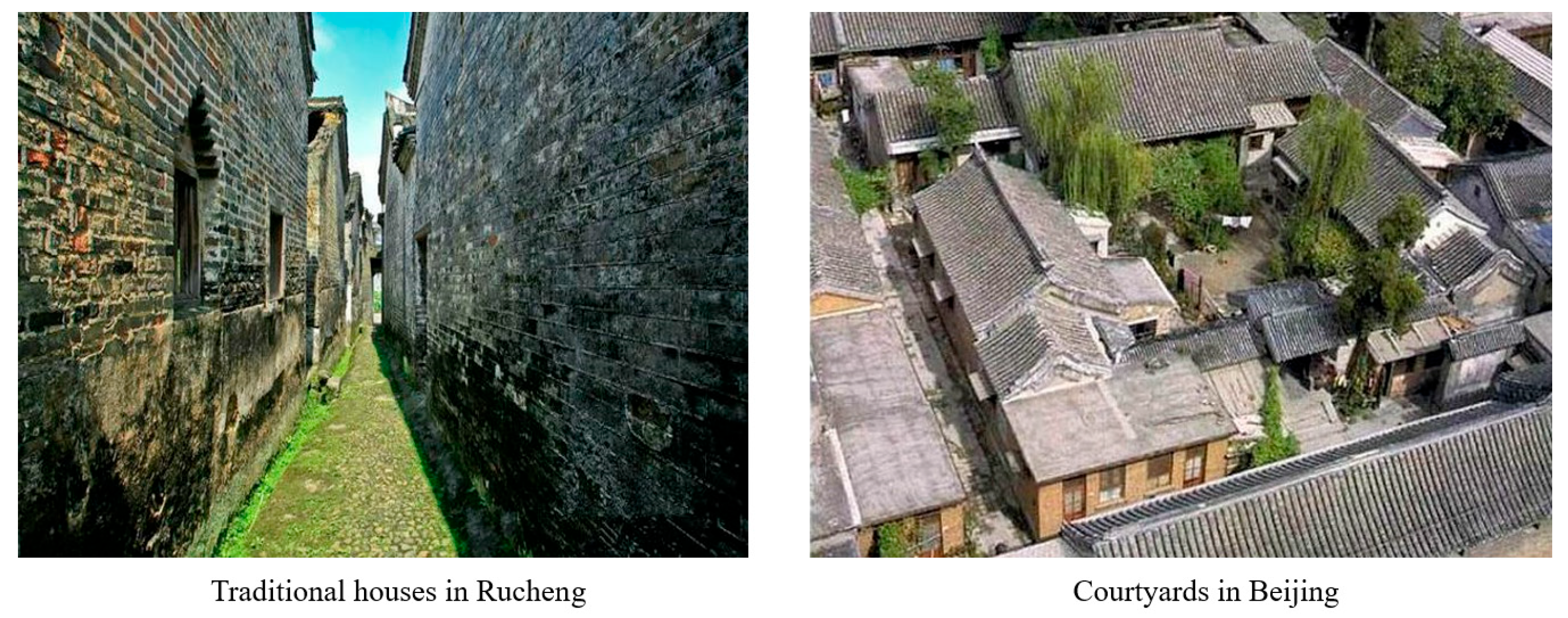
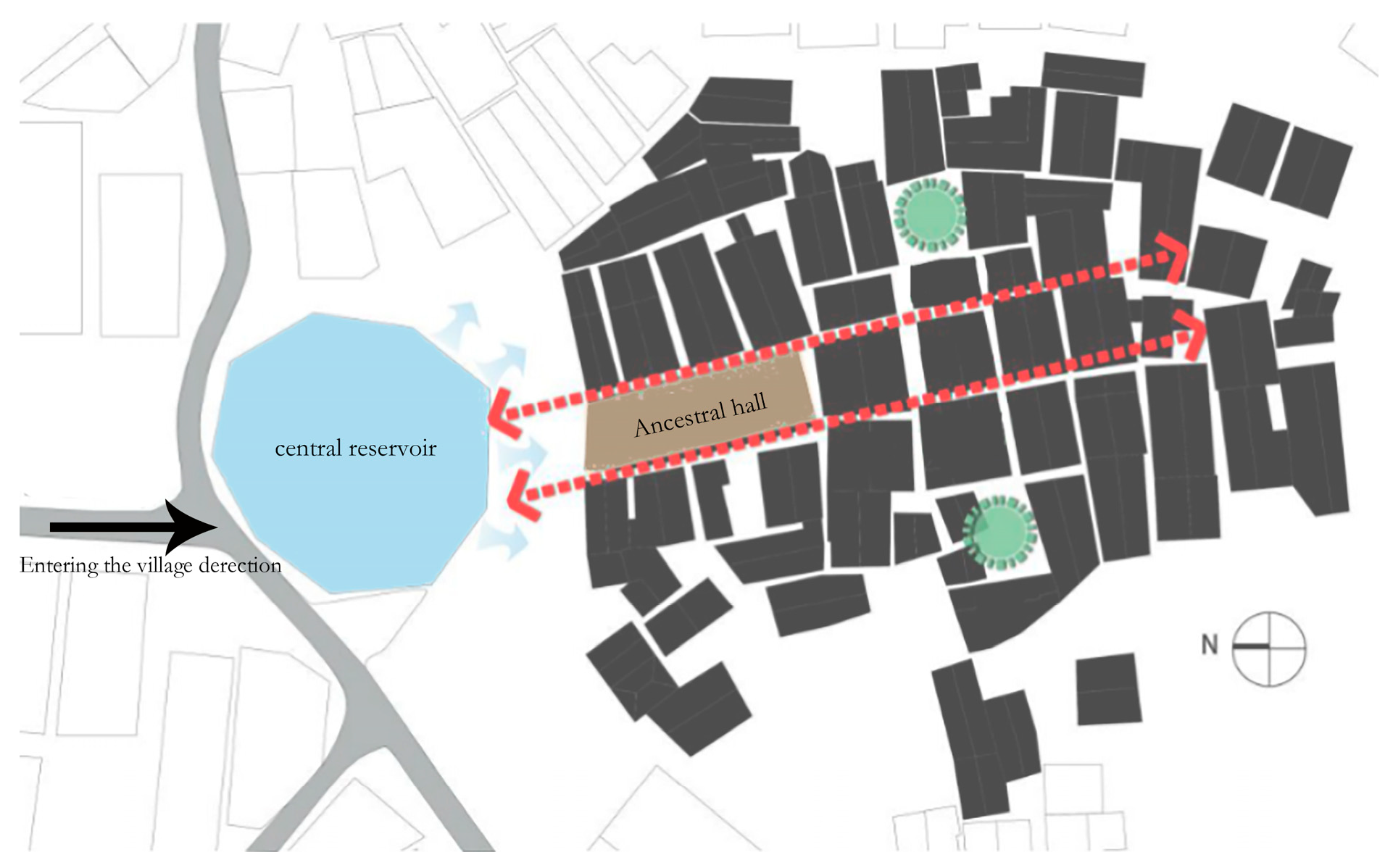
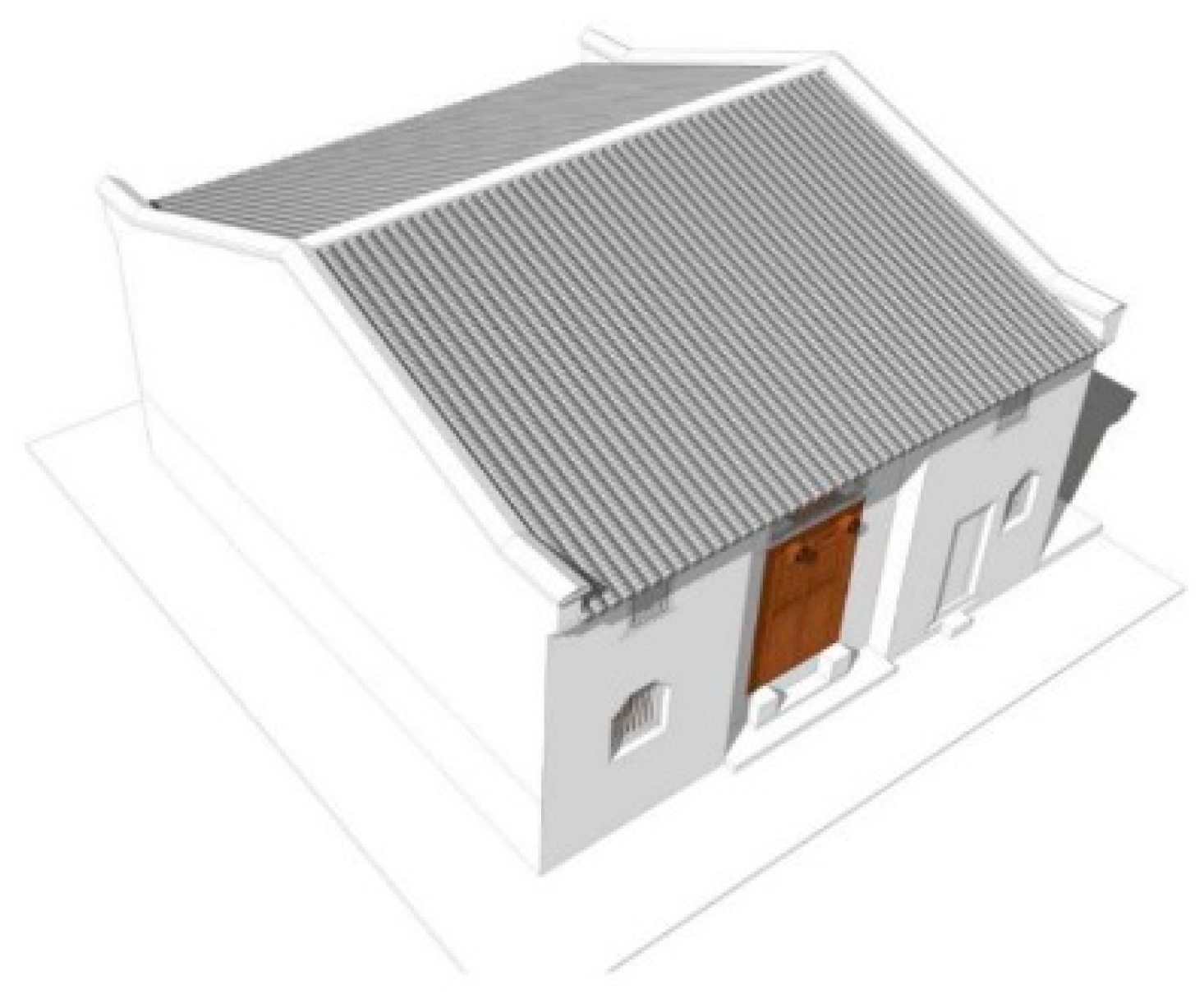
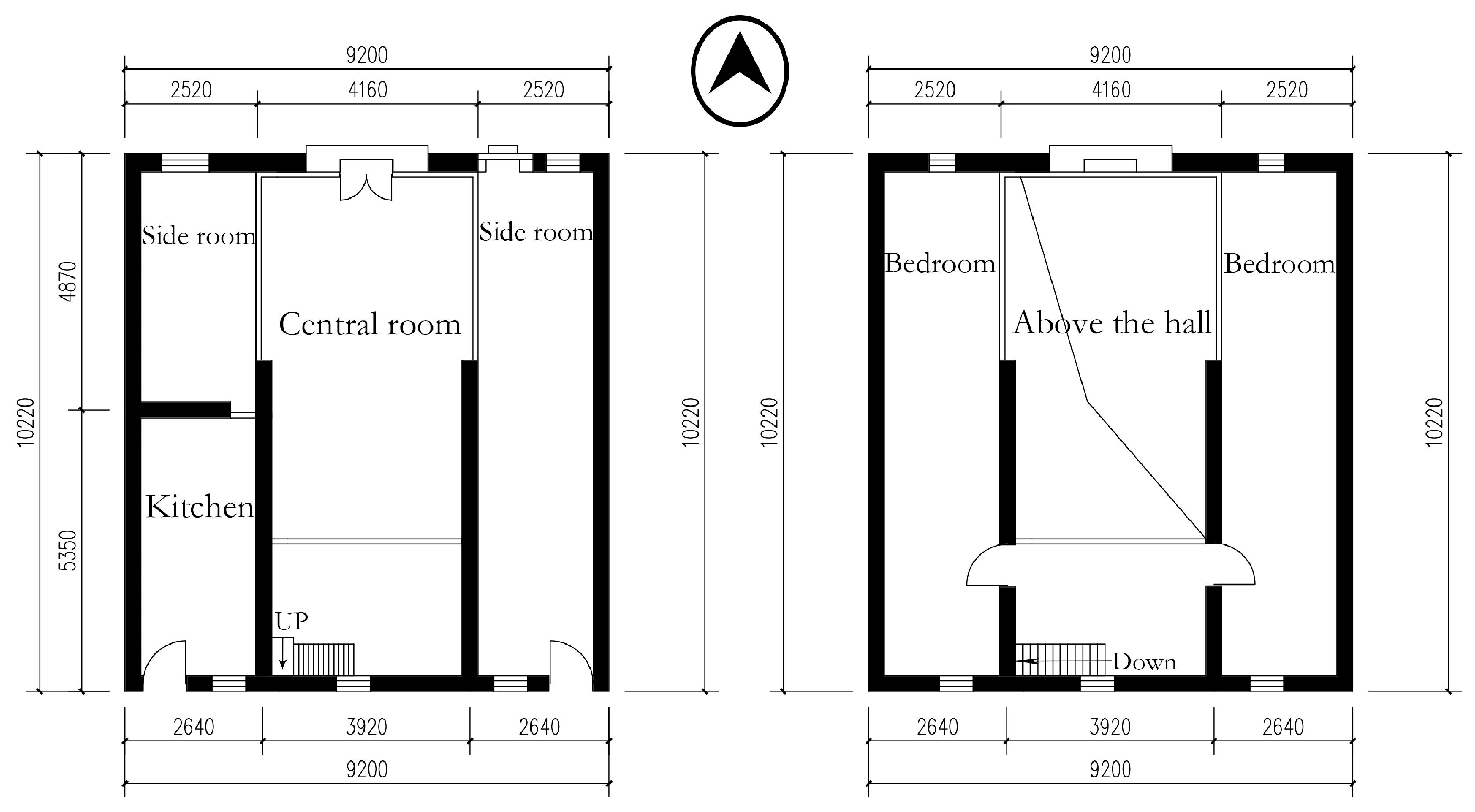
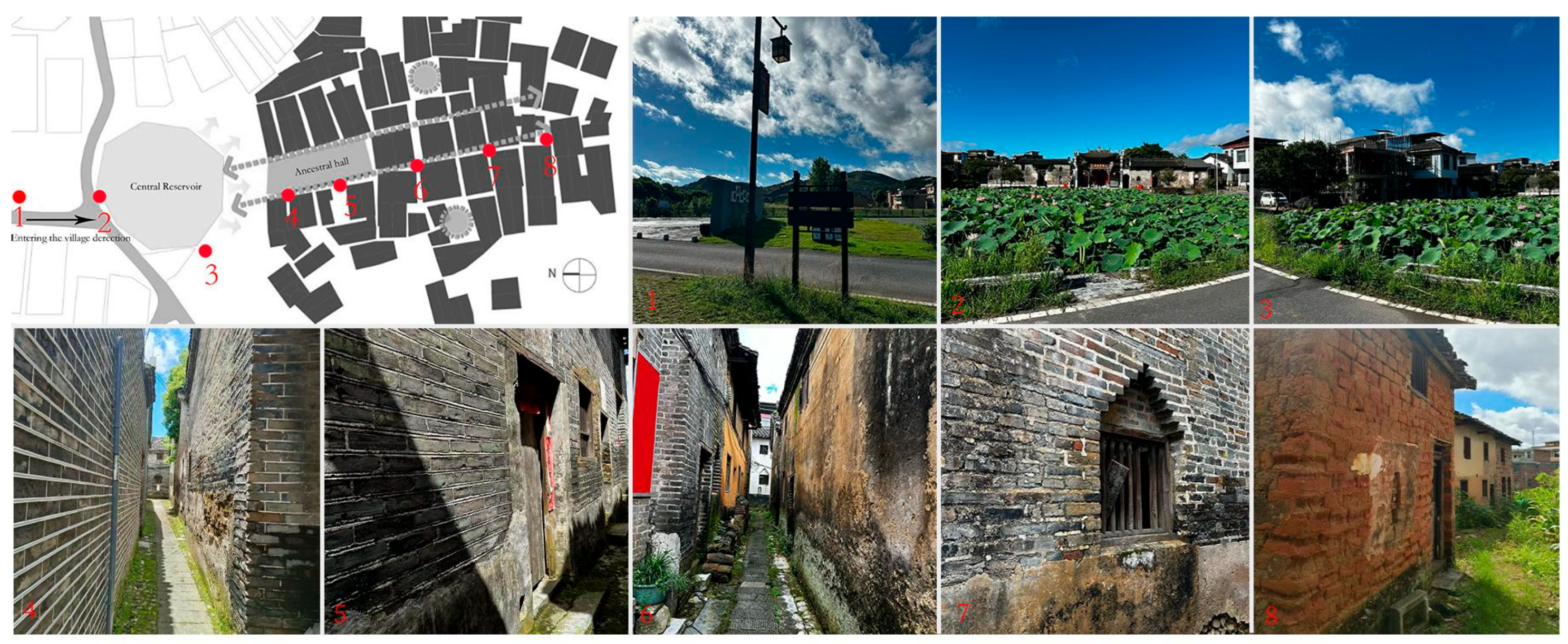


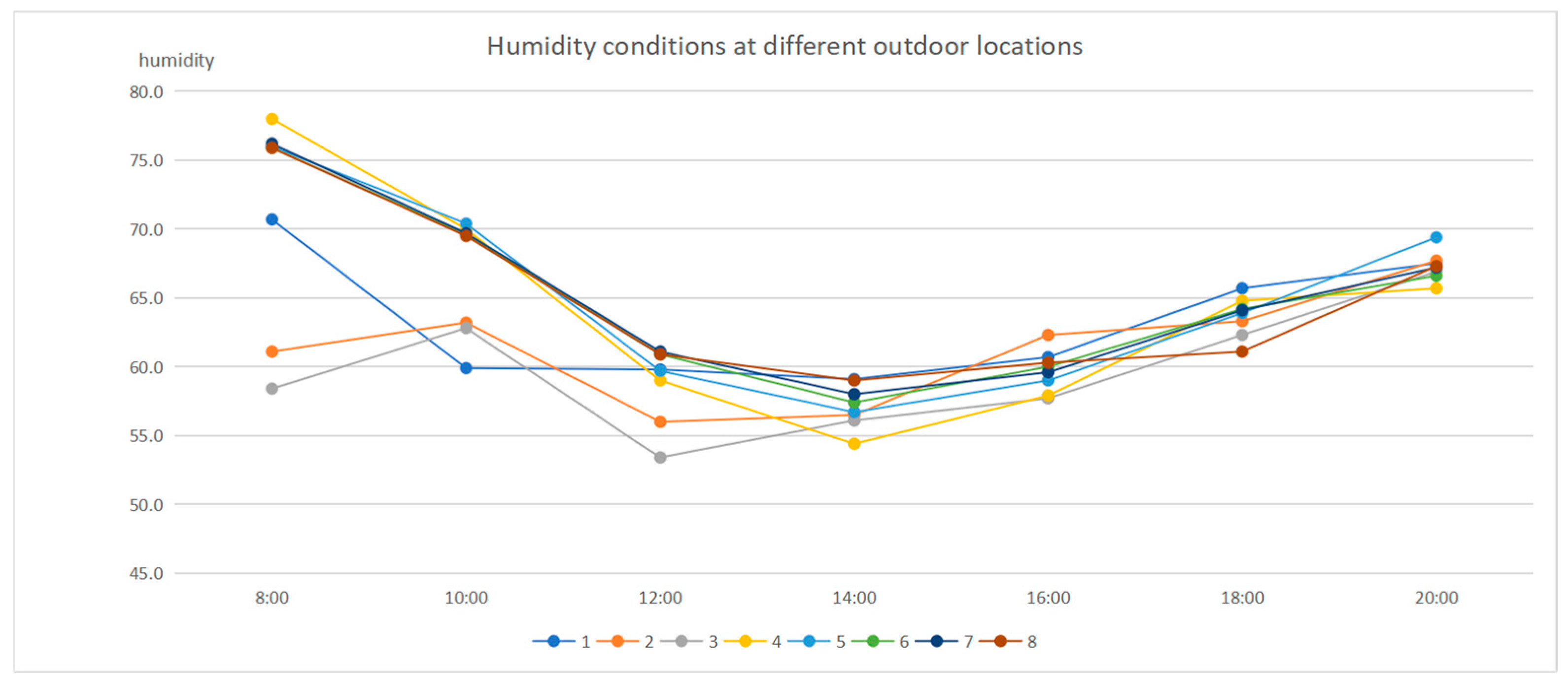
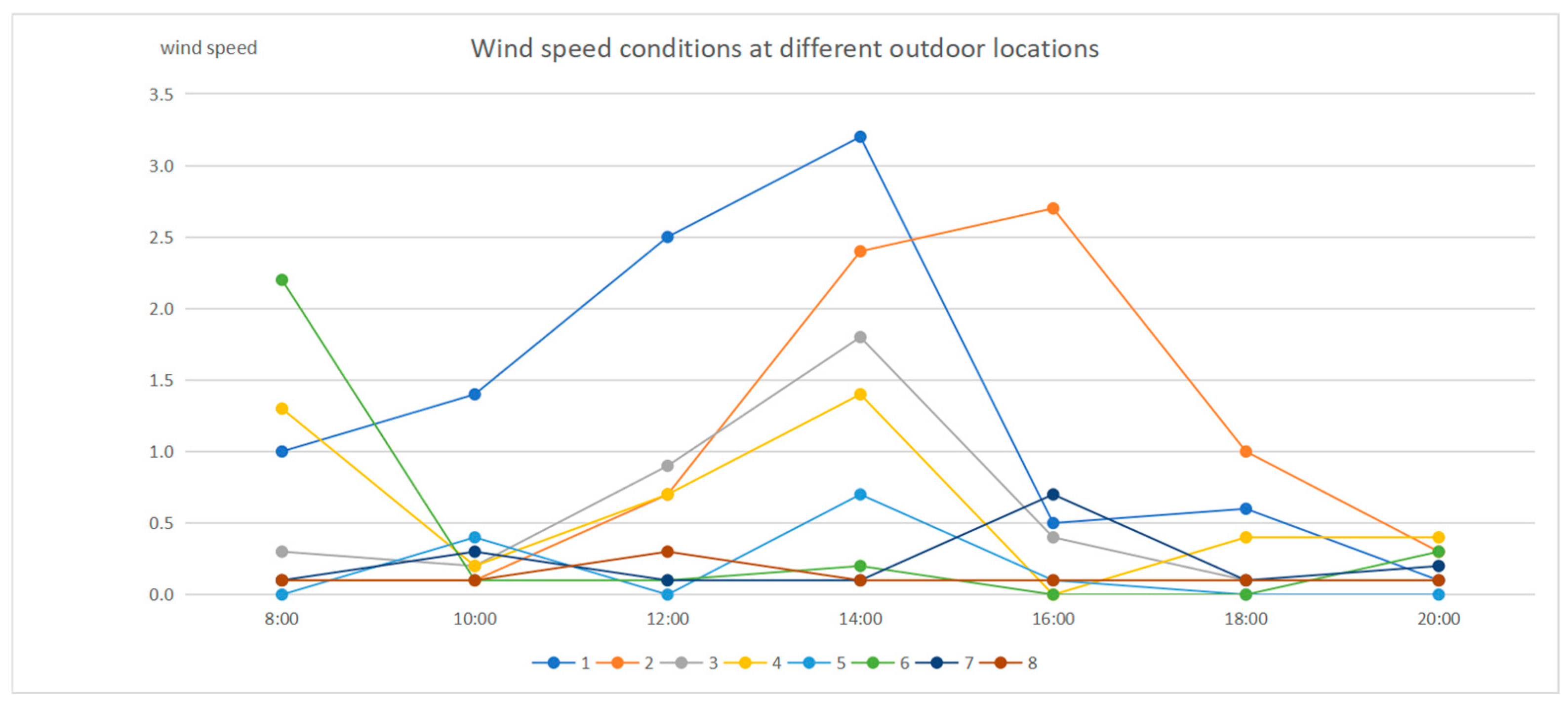
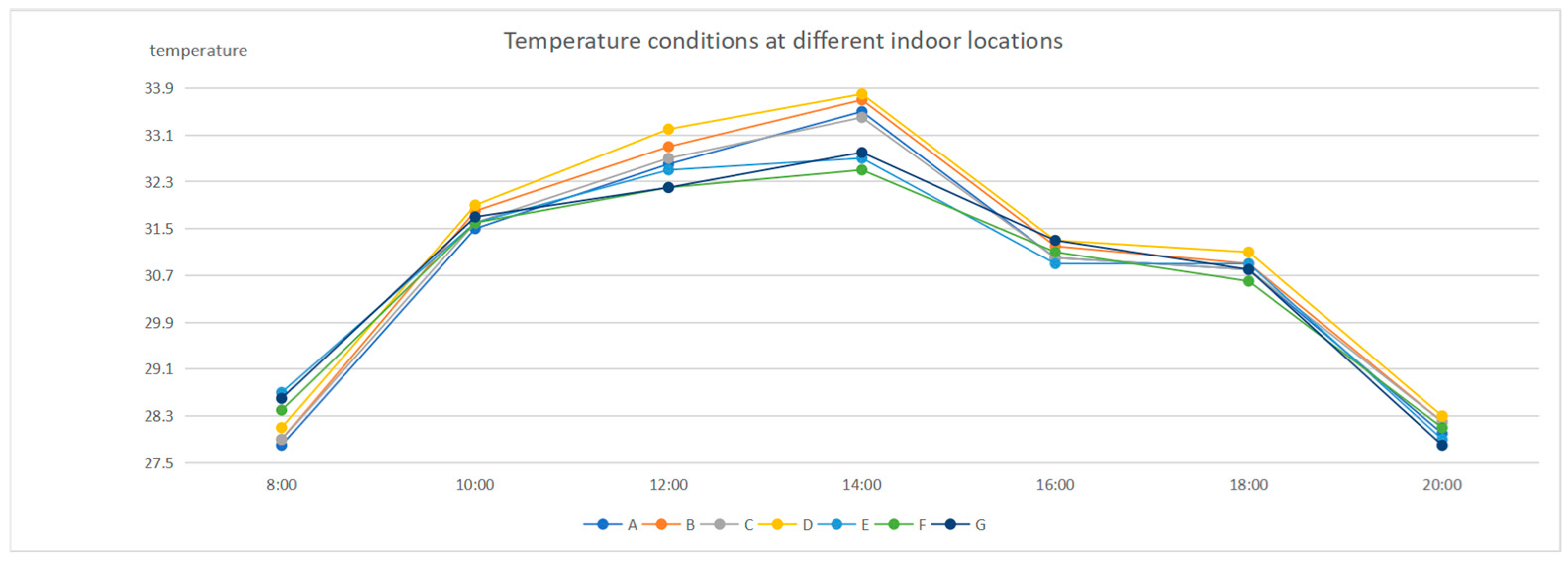
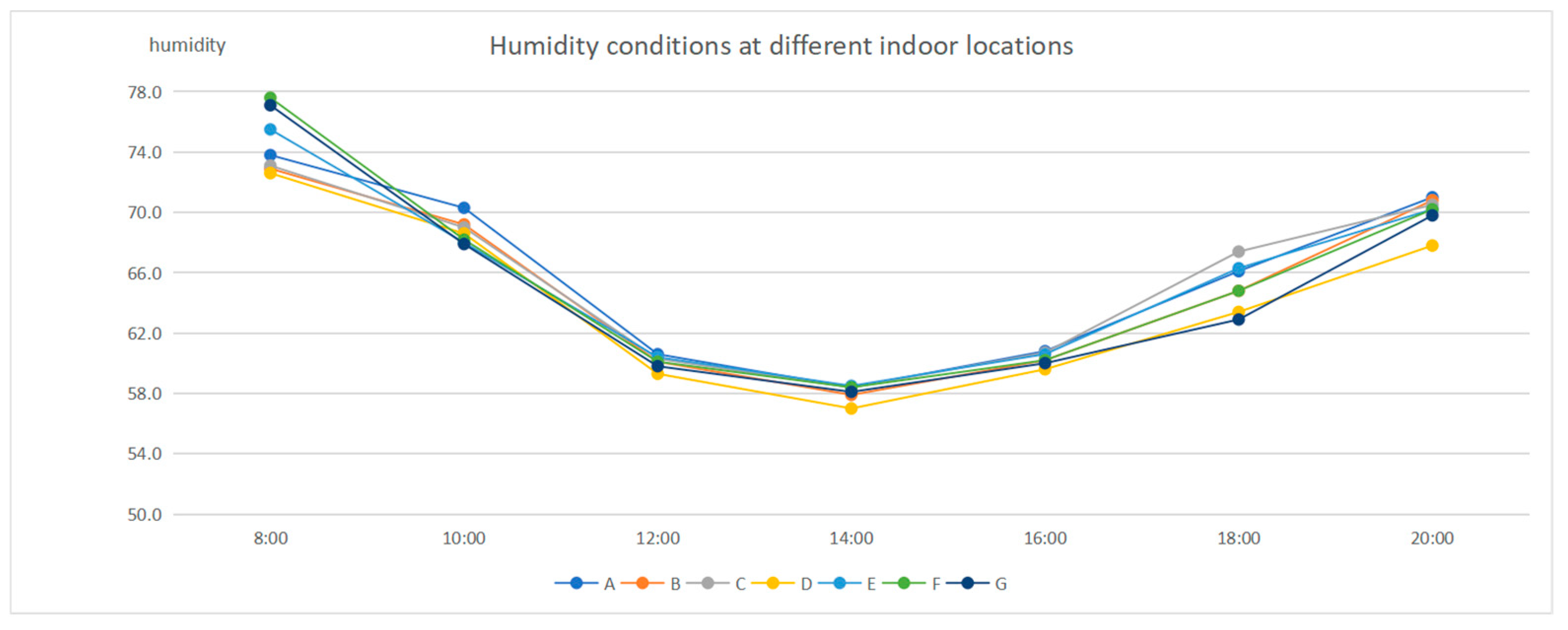
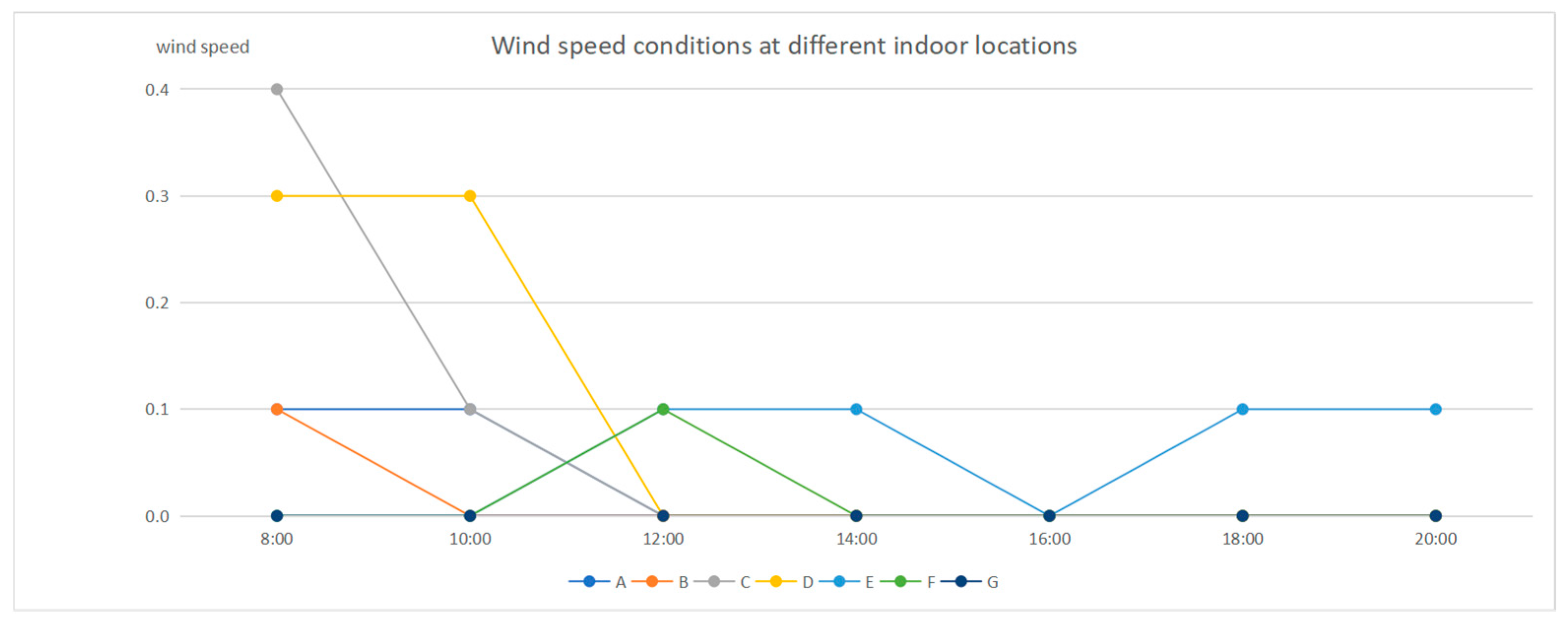

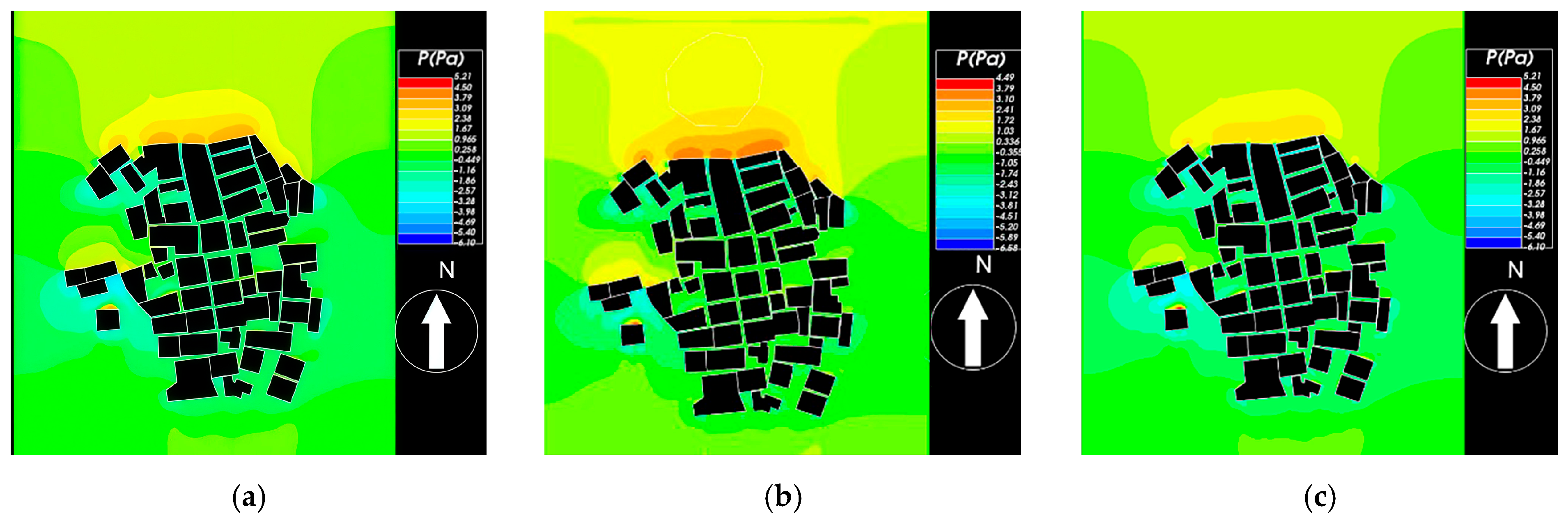
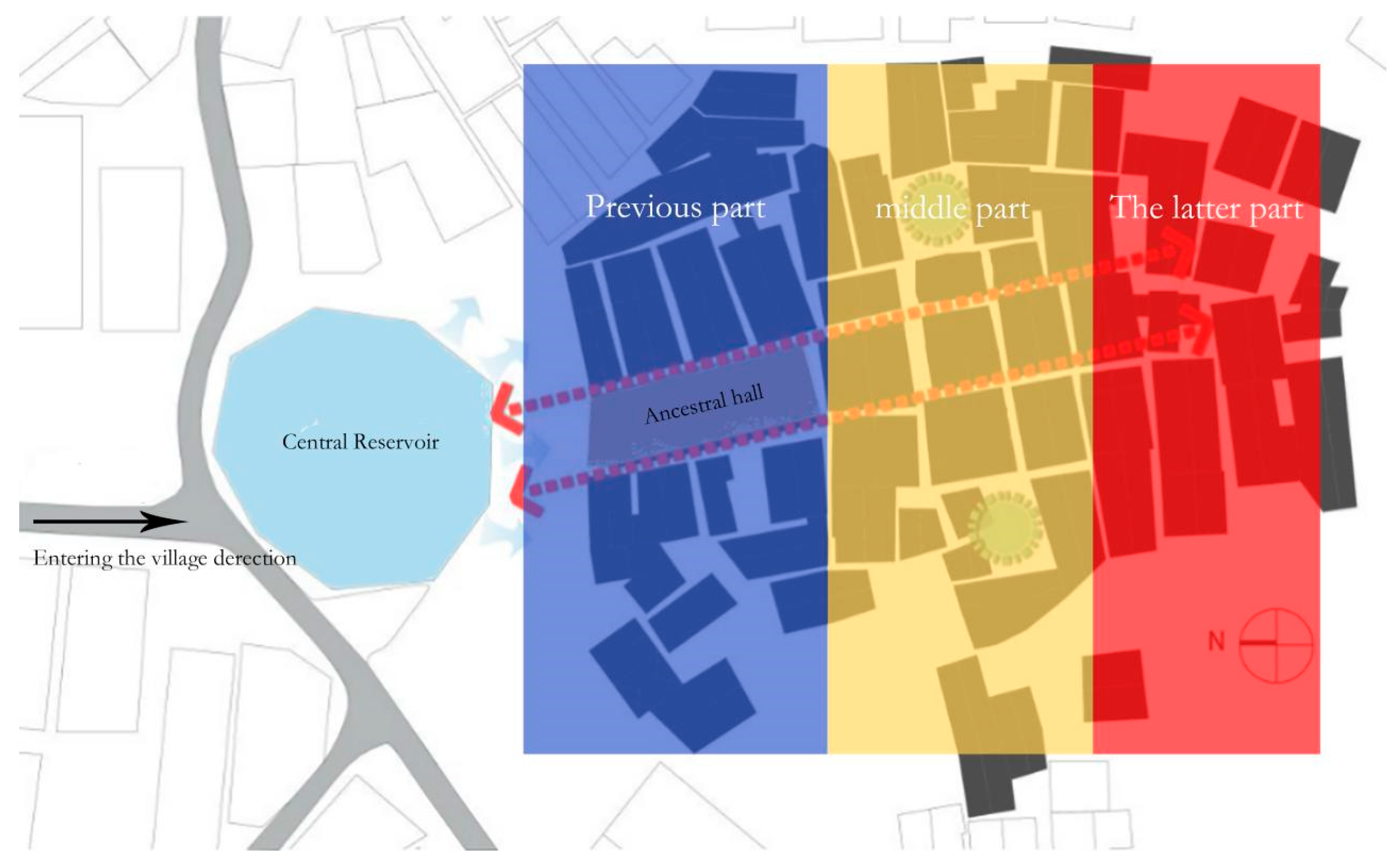

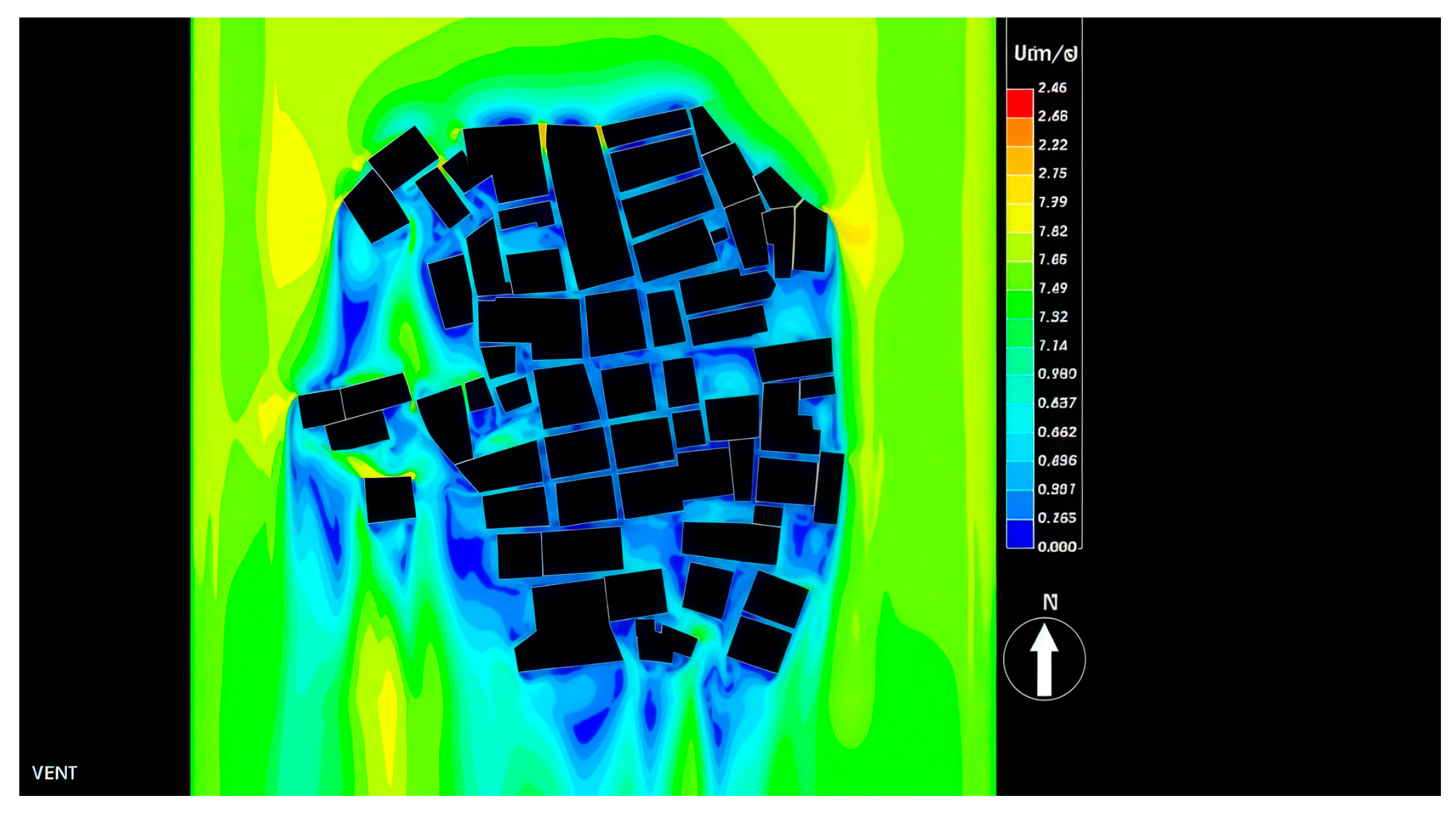
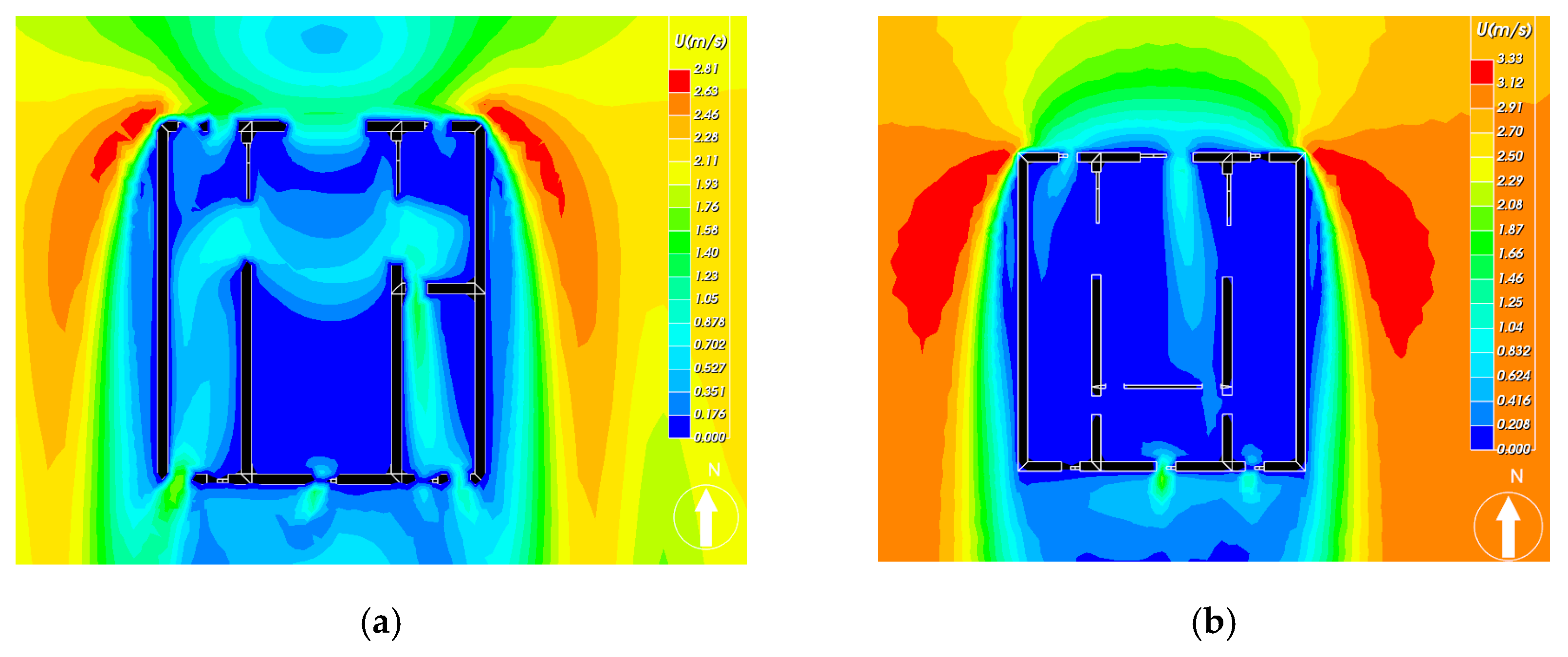



| Name | Season | Wind Speed (m/s) | Wind Direction | Wind Speed (°) |
|---|---|---|---|---|
| Jinshan village | Summer | 3.2 | N | 90.0 |
| Location of Residential Group | Wind Speed Interval (m/s)/Pressure Value | Wind Environment Analysis | |||
|---|---|---|---|---|---|
| At 0.5 m | At 1.5 m | At 5.5 m | Advantage | Insufficient | |
| Front section | 0.6–1.5 | 0.8–2.4 | 0.8–4.0 | The windward side of the pond, facing the water–land wind | The excessive depth on both sides of the ancestral hall affects the ventilation effect in the middle section |
| Large | Large | Large | |||
| Middle section | 0–0.5 | 0–0.5 | 0–1.0 | The enhancement of ventilation in public green spaces on both the east and west sides | Dense rowhouse layout; partial building setback creates a ventilation alley |
| Small | Small | Moderate | |||
| Posterior section | 0–1.0 | 0–1.0 | 0.5–2.8 | It is relatively open and not dense; four winds come from all directions | Neglecting the use of the southeast wind |
| Small | Small | Large | |||
| Location | Wind Speed Range (m/s) | |
|---|---|---|
| 1F | 2F | |
| Front section | 0.17–0.7 | 0.2–1.25 |
| Posterior section | 0–0.05 | 0–0.04 |
| Projection Angle | Floor | Wind Speed Cloud Map | Wind Speed Range | Ventilation |
|---|---|---|---|---|
| 0° | 1F | 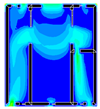 | 0–0.24 m/s | There are many windless areas in the back half of the main hall, while the side rooms have better ventilation. |
| 2F |  | 0–0.04 m/s | The local relative wind speed is high, and there is a large area of windless zone between the side rooms and the middle. | |
| 30° | 1F |  | 0–0.25 m/s | The main hall has a through-draft, and the overall ventilation is good. |
| 2F |  | 0–0.02 m/s | Poor ventilation, with large dead zones. | |
| 45° | 1F | 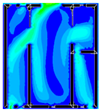 | 0–0.22 m/s | The ventilation in the rooms on both sides is better, forming a circulation in the main hall, reducing the area of no-wind zones. |
| 2F |  | 0–0.08 m/s | The average wind speed has improved, but the area of no-wind zone is large. | |
| 60° | 1F |  | 0–0.19 m/s | Wind blows through various areas, but the uniformity of ventilation is not high. |
| 2F |  | 0–0.08 m/s | The ventilation is poor, with large areas of no wind. |
| Window Opening Mode | Floor | Wind Speed Cloud Map | Wind Speed Range | Ventilation |
|---|---|---|---|---|
| Casement window | 1F |  | 0–0.23 m/s | There are many windless areas in the back half of the main hall, while the side rooms have better ventilation. |
| 2F | 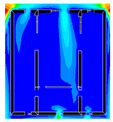 | 0–0.04 m/s | The local relative wind speed is high, and there is a large area of windless zone between the side rooms and the middle. | |
| Left and right sliding window | 1F | 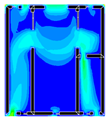 | 0–0.254 m/s | There are many windless areas in the back half of the main hall, while the side rooms have better ventilation. |
| 2F |  | 0–0.04m/s | The local relative wind speed is high, and there is a large area of windless zone between the side rooms and the middle. | |
| Overhung window | 1F | 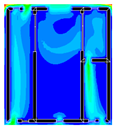 | 0–0.31 m/s | The ventilation range in the side room has expanded, with good uniformity. The area without wind in the latter half of the main hall is relatively large. |
| 2F | 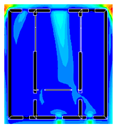 | 0–0.11 m/s | The average wind speed is improved, but the area of no-wind zone is large. | |
| Mid-hung window | 1F | 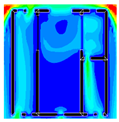 | 0–0.32 m/s | The ventilation range in the side room has expanded, with good uniformity. The area without wind in the latter half of the main hall is relatively large. |
| 2F | 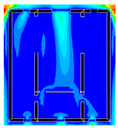 | 0–0.16 m/s | The average wind speed is increased, and the ventilation range is improved. | |
| Underhung window | 1F | 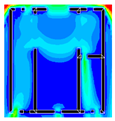 | 0–0.27 m/s | The ventilation uniformity and influence range are quite large, but the area without wind is still relatively large. |
| 2F | 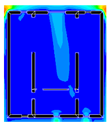 | 0–0.06 m/s | The local relative wind speed is high, and there is a large area of windless zone between the side rooms and the middle. |
Disclaimer/Publisher’s Note: The statements, opinions and data contained in all publications are solely those of the individual author(s) and contributor(s) and not of MDPI and/or the editor(s). MDPI and/or the editor(s) disclaim responsibility for any injury to people or property resulting from any ideas, methods, instructions or products referred to in the content. |
© 2025 by the authors. Licensee MDPI, Basel, Switzerland. This article is an open access article distributed under the terms and conditions of the Creative Commons Attribution (CC BY) license (https://creativecommons.org/licenses/by/4.0/).
Share and Cite
Yang, X.; Chen, F.; He, Y.; Tang, X.; Shen, L.; Zhou, X.; Yan, W. Study on the Summer Ventilation Mechanism of Traditional Dwellings in China’s Hot Summer and Cold Winter Region: A Case Study of Rucheng Dwellings in Hunan. Buildings 2025, 15, 3121. https://doi.org/10.3390/buildings15173121
Yang X, Chen F, He Y, Tang X, Shen L, Zhou X, Yan W. Study on the Summer Ventilation Mechanism of Traditional Dwellings in China’s Hot Summer and Cold Winter Region: A Case Study of Rucheng Dwellings in Hunan. Buildings. 2025; 15(17):3121. https://doi.org/10.3390/buildings15173121
Chicago/Turabian StyleYang, Xi, Fuming Chen, Yufeng He, Xiya Tang, Ling Shen, Xiang Zhou, and Weiwen Yan. 2025. "Study on the Summer Ventilation Mechanism of Traditional Dwellings in China’s Hot Summer and Cold Winter Region: A Case Study of Rucheng Dwellings in Hunan" Buildings 15, no. 17: 3121. https://doi.org/10.3390/buildings15173121
APA StyleYang, X., Chen, F., He, Y., Tang, X., Shen, L., Zhou, X., & Yan, W. (2025). Study on the Summer Ventilation Mechanism of Traditional Dwellings in China’s Hot Summer and Cold Winter Region: A Case Study of Rucheng Dwellings in Hunan. Buildings, 15(17), 3121. https://doi.org/10.3390/buildings15173121





